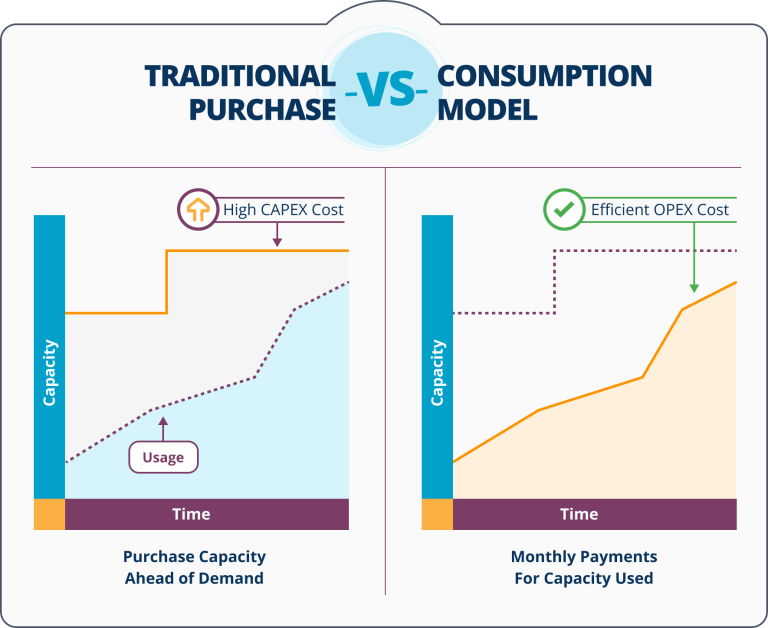In the rapidly evolving landscape of technology and digital connectivity, the paramount importance of securing sensitive information, preserving the integrity of systems, and mitigating potential risks cannot be overstated.
The terms network security and cybersecurity are often used interchangeably, yet they encapsulate distinct realms of defense against the multifaceted landscape of digital threats. Although both network security and cybersecurity are integral components in maintaining the fabric of digital trust, they possess unique focuses, methodologies, and contributions.
In this extensive exploration, we will delve into the intricate realms of network security and cybersecurity, uncovering their shared elements, divergences, and the pivotal roles they play in an increasingly digitized world.
What Is Network Security?
Network security emerges as a subset of cybersecurity, dedicating itself to protecting the confidentiality, integrity, and availability of data as it traverses through networks. In essence, it encompasses a spectrum of practices that thwart unauthorized access, misuse, tampering, or disruption of a computer network and the resources it encompasses. The domain of network security encompasses an array of technologies, processes, and strategies that collectively work to maintain the sanctity of a network infrastructure.
How Does Network Security Work?
Network security operates on a multitude of tools and techniques to create an impervious digital environment. Among the forefront defenses within network security, the firewall stands as an indomitable sentinel. Serving as a bridge between trusted internal networks and potentially untrusted external networks, firewalls vigilantly surveil incoming and outgoing traffic. Through the enforcement of stringent security policies, they thwart unauthorized access attempts, thereby safeguarding the network’s integrity.
Intrusion Detection Systems (IDS) and Intrusion Prevention Systems (IPS) operate as digital sentinels, ceaselessly monitoring network activities for irregular patterns or anomalies that might be indicative of ongoing cyberattacks. When these systems identify potential threats, they promptly notify administrators or trigger automated responses to halt malicious activities in their tracks.
Network Security Example
Consider a multinational corporation spanning multiple countries, each housing branch contributing to the company’s global operations. To ensure secure communication between the branches and headquarters, the company might opt to implement Virtual Private Networks (VPNs). These VPNs encode data as it journeys between locations, rendering it incomprehensible to any unauthorized entities attempting to intercept the communication. This cryptographic protection ensures that sensitive corporate information remains confidential and impervious to potential breaches, even while traversing inherently vulnerable networks like the Internet.
What Is Cybersecurity?
Cybersecurity emerges as a broader discipline encompassing an extensive array of practices, processes, and technologies designed to safeguard computer systems, networks, software, and data from a plethora of cyber threats. These threats encompass hacking, phishing, malware, ransomware, and a myriad of other malicious activities.
The overarching goal of cybersecurity is not limited to the protection of physical infrastructure but extends to the preservation of the invaluable digital assets and information residing within.
How Does Cybersecurity Work?
Cybersecurity operates through a multi-faceted approach to defense. It encompasses proactive measures, such as the deployment of robust antivirus software, regular security audits, and the education of users on secure online practices. Additionally, it places significant emphasis on the detective aspect, involving real-time monitoring to swiftly identify and neutralize emerging threats.
In the event of a breach, cybersecurity strategies orchestrate incident response plans to minimize damage and quickly restore normal operations.
Cybersecurity Example
Imagine an individual utilizing their personal computer to access online banking services. To fortify their cybersecurity posture, this individual adopts an array of precautions. They opt for robust, unique passwords and activate two-factor authentication to introduce an additional layer of private security. Moreover, they remain vigilant against phishing attacks, refraining from interacting with suspicious email links and implementing SMB security best practices.
To bolster their digital fortress, they’ve equipped their computer with state-of-the-art antivirus software, relentlessly scanning for any lurking malicious software attempting to infiltrate the system. This orchestrated amalgamation of precautions and protective measures forms an intricate tapestry of security, resilient against the diverse spectrum of potential cyber threats and ensuring the sanctity of sensitive financial information.
Network Security vs Cybersecurity: Similarities
While network security and cybersecurity remain distinct, they also share fundamental similarities.
Protection Goals
Both network security and cybersecurity are propelled by the overarching objective of shielding digital assets and sensitive information from threats. Regardless of the kind of threat, the central aim remains consistent: preventing unauthorized access and minimizing potential damage.
Holistic Approach
Both disciplines necessitate the adoption of a comprehensive, multifaceted approach to defense. They advocate for the integration of tools, technologies, processes, and best practices to cultivate a multifaceted defense strategy. This strategy serves the purpose of mitigating risks while simultaneously guaranteeing that no single point of vulnerability imperils overall security. A well-rounded approach encompasses facets such as encryption, access control, user authentication, vigilant monitoring, and meticulous incident response planning.
Continuous Monitoring
Continuous monitoring stands as an indispensable aspect of both network security and cybersecurity. Network administrators and cybersecurity experts vigilantly monitor network traffic, logs, and user activities to swiftly detect anomalies indicating breaches. This ongoing watchfulness proves pivotal in curbing the potential harm inflicted by cyber threats.

Network Security vs Cybersecurity: Differences
Though closely intertwined, network security and cybersecurity diverge in terms of their scope, primary focus, and the categories of threats they confront. The following differentiating factors highlight their distinct qualities.
Scope of Protection
Network security finds its primary focus in the realm of securing the pathways along which data flows within a network infrastructure. Its primary concern revolves around ensuring the resilience of the network architecture against potential attacks and unauthorized access attempts. Tools and measures encompassed by network security encompass firewall configurations, access control lists, intrusion detection systems, and the segmentation of networks.
On the contrary, cybersecurity extends its purview to embrace a more comprehensive spectrum of digital security. Its scope transcends the confines of the network infrastructure, encompassing systems, applications, devices, and the entirety of data. Within the realm of cybersecurity, measures such as antivirus software deployment, email filtering, software patch management, and user training against potential threats all take center stage.
Threat Landscape
The nature and scope of threats encountered by network security and cybersecurity differ markedly. Network security predominantly grapples with threats that exploit vulnerabilities intrinsic to the network infrastructure itself. Instances include Distributed Denial of Service (DDoS) attacks, in which a network is inundated with traffic to incapacitate it, and unauthorized access endeavors aimed at breaching the network’s defenses.
In contrast, cybersecurity addresses an extensive array of threats that target a broader digital canvas. This expansive domain encompasses social engineering attacks, such as phishing (wherein attackers manipulate individuals into divulging sensitive information) and malware assaults that capitalize on software vulnerabilities. Cybersecurity also extends to include the menace of ransomware attacks, wherein malicious software encrypts data and then demands ransom for its release.
Emphasis on Data Protection
Both network security and cybersecurity share a focus on protecting data, albeit through distinct avenues. In the context of network security, the emphasis is placed on securing the pathways through which data journeys, ensuring the confidentiality and integrity of data in transit. This entails the utilization of technologies such as encryption and secure communication protocols that deter eavesdropping and data interception.
Cybersecurity, in contrast, directs its focus toward the broader spectrum of data protection. This encompasses safeguarding data while it’s stored within systems, being transmitted, and actively being processed. The arsenal of cybersecurity incorporates techniques such as encryption, access controls, and data classification, which collectively contribute to shielding data from unauthorized access, breaches, and theft.
The Interplay Between Network Security and Cybersecurity
The realms of network security and cybersecurity are often perceived as interconnected threads within the broader fabric of digital defense. While their distinctions are evident, their collaboration and interdependence are equally noteworthy. The intricate interplay between these two domains contributes to the creation of a robust and resilient security landscape.
Overlapping Strategies
Despite their unique focuses, cybersecurity and network security frequently share strategies that enhance overall protection. For instance, both domains emphasize the significance of access control. Network security employs access control mechanisms to manage the permissions granted to users based on their roles and responsibilities. Similarly, cybersecurity utilizes access controls to restrict unauthorized access to systems and sensitive data. The synergy between these approaches bolsters the overall security posture of an organization.
Complementary Technologies
The technologies utilized in network security and cybersecurity often overlap and complement each other. Encryption, for instance, serves as a prime example. In network security, encryption is employed to secure data as it traverses networks, preventing interception by unauthorized entities. Encryption is essential to cybersecurity because it protects data by making it unreadable even if the network’s defenses are breached. This dual application of encryption highlights its multifaceted significance in fortifying both network and cybersecurity strategies.
Incident Response and Collaboration
Both network security and cybersecurity rely heavily on incident response to manage and mitigate the aftermath of security breaches. The collaboration between these domains becomes especially evident during incident response efforts. When a breach occurs, network security experts work with cybersecurity professionals to identify its extent and how it occurred. This collaborative effort ensures a comprehensive understanding of the incident and facilitates the development of effective remediation strategies.
Conclusion: Forging a Secure Digital Future
As the digital landscape continues to expand and evolve, the symbiotic relationship between network security and cybersecurity becomes increasingly vital. These two domains, while distinct, work in tandem to fortify our digital existence. Network security, with its focus on safeguarding data in transit, and cybersecurity, with its comprehensive approach to digital protection, are integral components of a cohesive defense strategy.
From individual users to multinational corporations, understanding the nuances of network security and cybersecurity is paramount. Performing cybersecurity risk tests and SMB web security checklists is of crucial importance for protecting your company’s private files. It empowers us to adopt proactive measures that shield us from emerging threats. It also prepares us to respond effectively in the face of adversity. As technologies advance and threats become more sophisticated, the collaboration between network security and cybersecurity will continue to play a pivotal role in ensuring a secure and resilient digital future.
In our interconnected world, network security and cybersecurity form a vital partnership, protecting data, systems, and personal information. This synergy defends against digital threats, ensuring a secure digital future through education and collaboration.
With Liquid Web, you will be able to secure your server quickly and efficiently. Liquid Web offers great options for VPS hosting, cloud dedicated servers, and dedicated servers for your website hosting needs. Contact the sales team and publish your wonderful website online today with Liquid Web.





